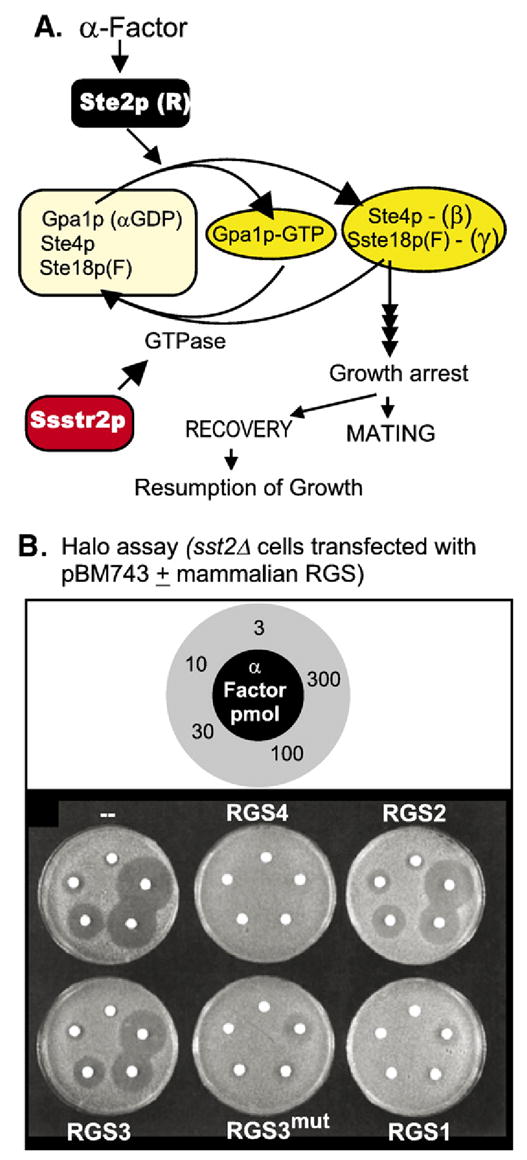Fig. 10.

(A) Signaling by mating factor receptors Ste2p and Ste3p, activated by α and a factor, respectively, is transduced in haploid Saccharomyces cerevisiae cells by an αβγ signal transducing G protein encoded in genes GPA1, STE4 and STE18. α or a factor binding to their respective receptors leads to growth arrest. In this G protein coupled system the signaling arm is the βγ dimer (Step:Ste18p (F)) and not the Gpa1p.GTP (αGTP) complex (Jiang et al., 1993 [80]). If mating does not occur, cells resume growth, a phenomenon referred to as adaptation. The SSTE gene product, a GTPase activating protein for Gpa1p, participates in this adaptation process. Ste18p(F), denotes that Ste18p, the product of the STE18 gene, is farnesylated. (B) Mutant loss of function stte2Δ cells are supersensitive to mating factor, seen in the formation of large halos of growth arrested cells. Supersensitivity can be suppressed by expression of mammalian RGS proteins (adapted from Druey et al., 1996 [93]).
